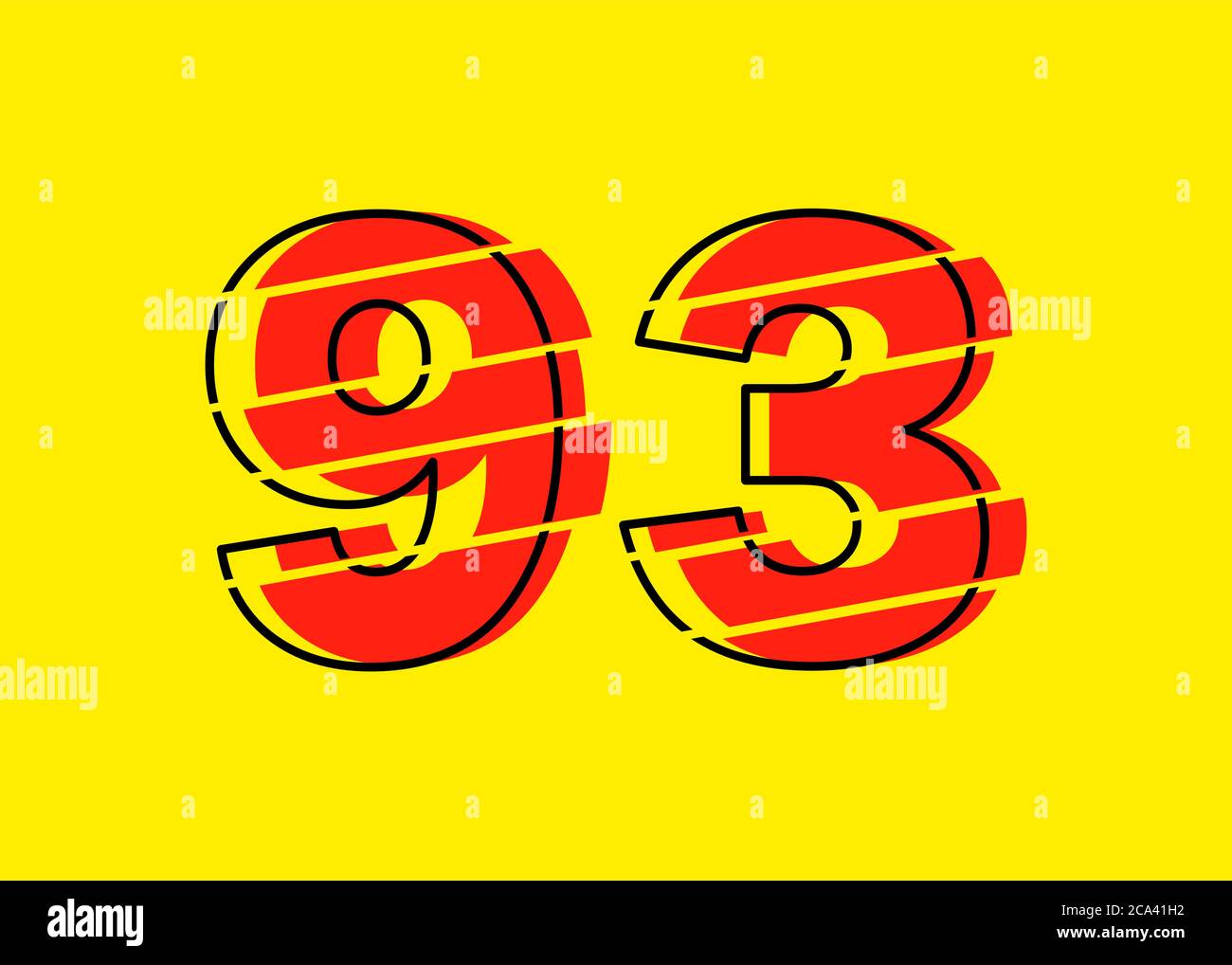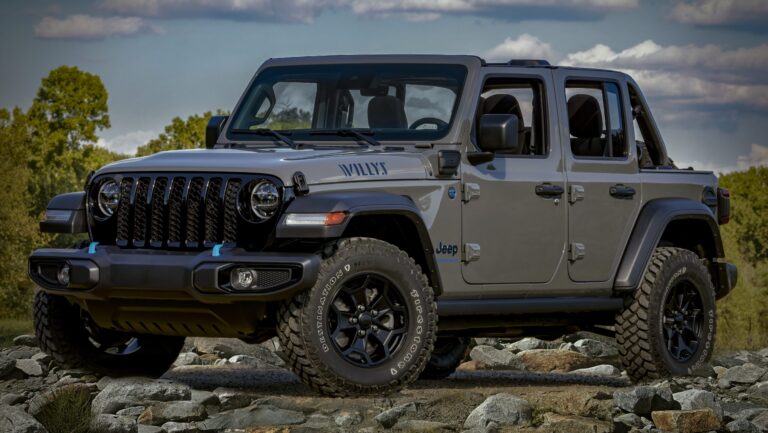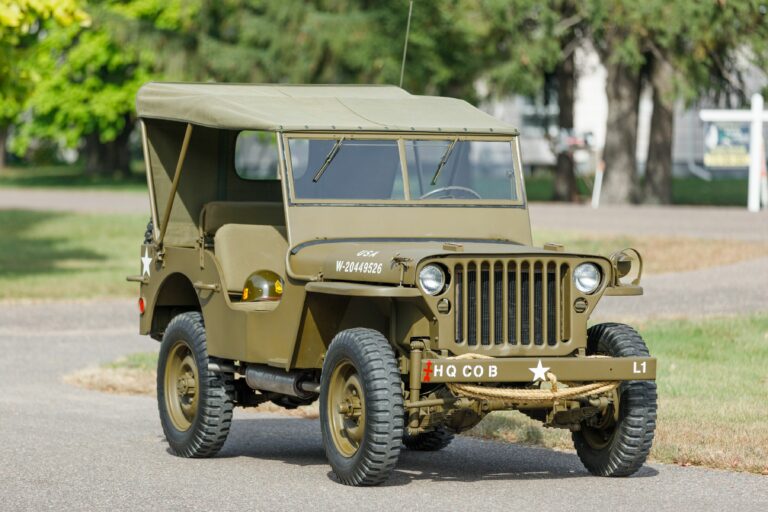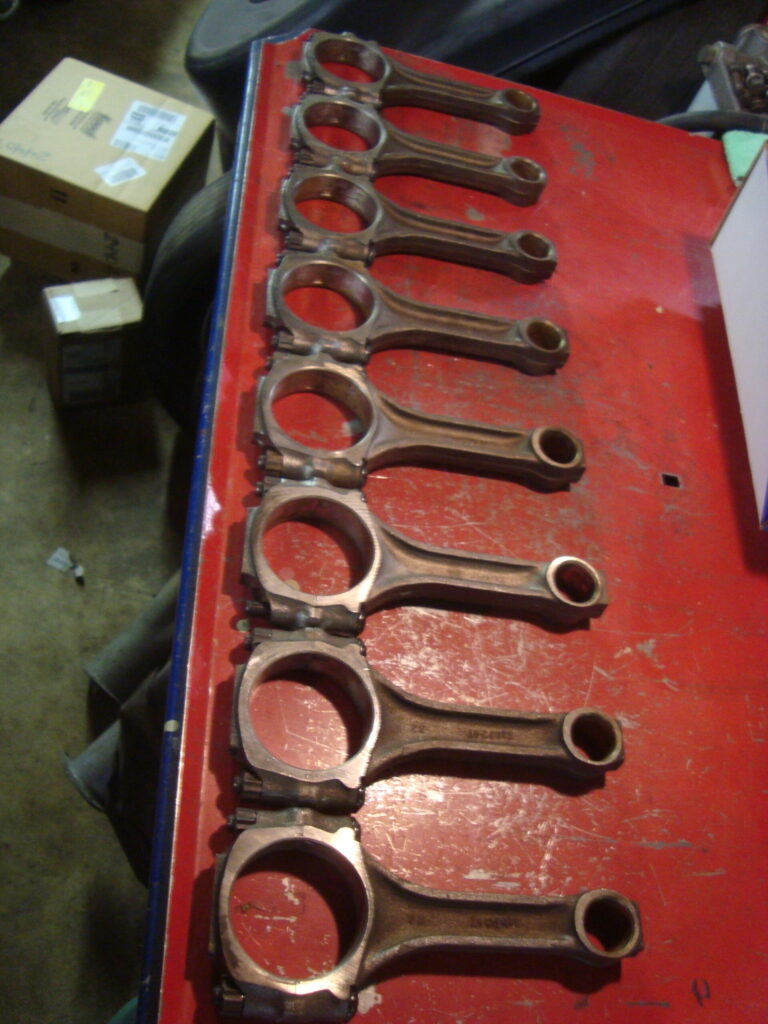The Enduring Legacy: A Deep Dive into the 1993 Jeep Cherokee (XJ)
The Enduring Legacy: A Deep Dive into the 1993 Jeep Cherokee (XJ) jeeps.truckstrend.com
The 1993 Jeep Cherokee, affectionately known by its chassis code "XJ," stands as a true icon in automotive history. More than just a sport utility vehicle, the XJ Cherokee carved out a unique niche, bridging the gap between rugged off-road capability and practical daily usability. Its unibody construction, a pioneering feature for SUVs at the time, combined with legendary powertrain options, cemented its status as a versatile workhorse that appealed to families, adventurers, and off-road enthusiasts alike. Decades after its production, the ’93 XJ continues to command a passionate following, celebrated for its enduring reliability, remarkable moddability, and timeless, utilitarian design. This article will delve deep into what makes the 1993 Jeep Cherokee a beloved classic, offering a comprehensive guide for owners, prospective buyers, and admirers.
I. A Brief History of the XJ Cherokee and the 1993 Model Year
The Enduring Legacy: A Deep Dive into the 1993 Jeep Cherokee (XJ)
The Jeep Cherokee (XJ) debuted in 1984, representing a radical departure from the traditional body-on-frame SUV design. Developed by American Motors Corporation (AMC) and later refined under Chrysler’s ownership, the XJ was conceived as a lighter, more fuel-efficient, and car-like alternative to larger SUVs, without sacrificing the brand’s renowned off-road prowess. Its unibody (monocoque) construction was revolutionary for an SUV, offering improved rigidity, reduced weight, and better handling characteristics.
By 1993, the XJ was well into its production run, benefiting from years of refinement and proving its mettle in various conditions. This model year falls within the "pre-facelift" era, retaining the classic exterior styling and interior layout that many purists prefer. It was a period of stability for the XJ, with the highly regarded 4.0-liter High Output (HO) inline-six engine firmly established as the powertrain of choice, solidifying its reputation for bulletproof reliability and ample torque. The 1993 model year represents a mature and highly capable iteration of the XJ, embodying all the qualities that made it a legend.
II. Core Specifications and Powertrains
The heart of the 1993 Jeep Cherokee’s enduring appeal lies in its robust mechanicals.
-
Engine Options:
- 4.0L High Output (HO) Inline-Six: This is the undisputed star. Producing 190 horsepower and 225 lb-ft of torque, the 4.0L HO is renowned for its durability, simplicity, and low-end torque, making it ideal for both highway cruising and demanding off-road trails. It’s a non-interference engine, meaning even if the timing chain breaks, the valves won’t hit the pistons, further contributing to its legendary status.
- 2.5L Inline-Four: Less common in the US market for the ’93 model, this engine offered a more fuel-efficient (though less powerful) option, typically paired with manual transmissions in 2WD or lighter-duty 4WD configurations.


Transmission Options:
- Aisin-Warner AW4 Automatic: The most common transmission paired with the 4.0L engine. This 4-speed automatic is incredibly durable and well-suited to the 4.0L’s power band. It’s known for its longevity with proper maintenance.
- Aisin AX-15 Manual: A 5-speed manual transmission available with both the 4.0L and 2.5L engines. It’s a robust and popular choice among enthusiasts for its direct control and reliability.

-
Drivetrain and Transfer Cases:
- Command-Trac (NP231): The standard part-time 4WD system. It offers 2WD, 4H (part-time), N (neutral), and 4L (part-time) settings. "Part-time" means it should only be used on loose or slippery surfaces, as it locks the front and rear axles together, preventing driveline wind-up on dry pavement.
- Selec-Trac (NP242): An optional full-time 4WD system. This offers 2WD, 4H Full-Time (allows for use on all surfaces, including dry pavement), 4H Part-Time, N, and 4L Part-Time. The 4H Full-Time mode makes it more versatile for varying weather conditions.
- Axles: Typically, a Dana 30 reverse-cut front axle and either a Chrysler 8.25 or Dana 35 rear axle. The Chrysler 8.25 is generally preferred for its strength over the Dana 35.
-
Suspension: The XJ features a robust coil-sprung live axle front suspension (Quadra-Link) and leaf-sprung live axle rear suspension. This configuration provides excellent articulation and durability for off-road use, while still offering a reasonable on-road ride.
III. Design, Interior, and Comfort
The 1993 Jeep Cherokee’s design is a testament to functional minimalism. Its boxy, upright stance is instantly recognizable and has aged remarkably well. The large glass areas provide excellent visibility, a trait often missing in modern SUVs.
- Exterior: The ’93 XJ sports the classic seven-slot grille, round headlights, and a straightforward, no-nonsense profile. Its relatively compact footprint for an SUV makes it maneuverable in urban environments and on tight trails. The unibody construction means there’s no separate frame, contributing to its lower stance and car-like handling.
- Interior: Step inside a 1993 XJ, and you’re met with a utilitarian but highly functional cabin. The dashboard is simple and intuitive, with clearly legible gauges and straightforward controls. While not luxurious by modern standards, the materials are durable, and the layout is ergonomically sound. Seating is comfortable enough for long drives, and the rear bench offers decent space for passengers.
- Cargo Space: The XJ’s boxy shape translates to surprising cargo capacity, especially with the rear seats folded down. It’s spacious enough for camping gear, groceries, or a weekend’s worth of adventure equipment.
IV. Why the 1993 Cherokee Remains Popular: Benefits and Strengths
The enduring appeal of the 1993 XJ Cherokee is rooted in several key attributes:
- Legendary Durability and Reliability: The 4.0L HO engine is often cited as one of the most reliable engines ever produced. With basic maintenance, these vehicles routinely exceed 200,000, 300,000, and even 400,000 miles.
- Exceptional Off-Road Prowess: Despite its unibody design, the XJ’s short wheelbase, solid axles, and capable 4WD systems make it an incredibly competent off-roader. It can tackle trails that challenge much larger and more expensive vehicles.
- Unparalleled Moddability and Aftermarket Support: The XJ has one of the largest and most active aftermarket communities. From lift kits, heavy-duty bumpers, and armor to engine performance upgrades and axle swaps, virtually anything can be done to customize an XJ for specific needs, and parts are widely available.
- Simplicity of Maintenance and Repair: The mechanical simplicity of the XJ means that many repairs and maintenance tasks can be performed by the average DIY enthusiast with basic tools and a service manual. This contributes to lower ownership costs.
- Affordability: Both the initial purchase price and the cost of parts are generally very reasonable, making it an accessible entry point into the 4×4 world.
- Versatility: The XJ can serve many roles: a reliable daily driver, a weekend trail rig, an overlanding platform, or a dependable work vehicle.
V. Common Issues and Maintenance Considerations
While the ’93 XJ is known for its durability, it’s not without its common quirks and potential issues, largely due to age. Awareness and preventative maintenance are key.
- Rust: The biggest enemy of the XJ. Check rocker panels, floorboards, rear quarter panels, and especially the unibody frame rails for rust, particularly in areas where salt is used on roads.
- Cooling System: The 4.0L runs hot, and the cooling system is often a weak point. Watch for overheating, and consider upgrading the radiator, water pump, fan clutch, and thermostat, especially if planning heavy use.
- Oil Leaks: Common leaks include the rear main seal (a notorious XJ issue, though not always severe) and the valve cover gasket.
- Steering Wander / "Death Wobble": Worn steering components (tie rods, ball joints, track bar, steering box) can lead to loose steering or the dreaded "death wobble" – a violent, uncontrollable shaking of the front end at speed. Regular inspection and replacement of worn parts are crucial.
- Electrical Gremlins: Age can lead to brittle wiring, poor grounds, and issues with power windows, gauges, and sensors.
- Sagging Leaf Springs: The rear leaf springs are prone to sagging over time, especially if the vehicle has carried heavy loads. This affects ride height and potentially handling.
- Unibody Stiffening: For heavily modified XJs used for extreme off-roading, unibody stiffeners are highly recommended to prevent chassis flex and cracks.
Practical Tip: Invest in a factory service manual or a good aftermarket equivalent. Regular fluid changes (engine oil, transmission fluid, transfer case fluid, differential fluid) and addressing minor issues promptly will significantly extend the life of your XJ.
VI. Buying and Owning a 1993 Jeep Cherokee: Practical Advice
If you’re considering buying a 1993 XJ, or already own one, here’s some practical advice:
- What to Look For When Buying:
- Rust: This is paramount. Get underneath the vehicle and inspect thoroughly.
- Engine: Listen for strange noises (knocks, ticks), check for excessive smoke from the exhaust, and look for major oil leaks. A cold start can reveal issues.
- Transmission: Ensure smooth shifts (automatic) or no grinding (manual). Test 4WD engagement (both high and low range).
- Suspension/Steering: Look for worn bushings, leaky shocks, and excessive play in the steering wheel.
- Fluid Levels/Condition: Check all fluids for proper levels and signs of contamination.
- Modifications: Be wary of poorly executed modifications. A stock or lightly modified XJ is often a safer bet unless you know the quality of work.
- Pre-Purchase Inspection (PPI): Always get a professional inspection from a trusted mechanic, especially one familiar with Jeeps.
- Budgeting: Factor in not just the purchase price, but also potential immediate repairs, routine maintenance, and any desired modifications. These are older vehicles, and things will inevitably need attention.
- Modifications: Start with sensible upgrades. A mild lift (2-3 inches) and slightly larger tires can dramatically improve off-road capability without compromising reliability. Prioritize safety (brakes, steering) before extreme performance.
- Join the Community: The XJ community is vast and incredibly helpful. Online forums, Facebook groups, and local Jeep clubs are invaluable resources for advice, troubleshooting, and finding parts.
Estimated Market Value for a 1993 Jeep Cherokee (XJ)
Please note that these are highly generalized estimates. Actual prices can vary wildly based on geographic location, local market demand, specific options, maintenance history, and the seller’s urgency.
| Condition Category | Estimated Price Range (USD) | Key Characteristics |
|---|---|---|
| Poor / Parts | $500 – $1,500 | Significant rust (frame/unibody compromise likely), major mechanical issues (engine/transmission), non-running or barely running, extensive cosmetic damage. Best for parts donor or full restoration project for the highly dedicated. |
| Fair / Driver | $1,500 – $4,000 | Running and driving, but likely has significant rust (surface or moderate body rust), numerous mechanical issues needing attention (leaks, worn suspension, electrical quirks), high mileage, worn interior. Usable as a budget daily driver or a solid base for a moderate build, but expect to invest time and money. |
| Good / Well-Maintained | $4,000 – $8,000 | Minimal to no significant rust (especially on unibody), mechanically sound with routine maintenance records, engine and transmission perform well, all major systems functional. May have minor cosmetic imperfections or high but well-maintained mileage. Suitable as a reliable daily driver or a trail-ready vehicle with minor upgrades. |
| Excellent / Restored | $8,000 – $15,000+ | Very rare to find. Near-perfect condition, minimal to no rust, fully restored or meticulously maintained with low mileage, potentially upgraded components. Often represents a significant investment in restoration or a survivor vehicle. Collector’s item or a turn-key, highly capable off-roader/overlander that needs nothing immediately. |
Factors Affecting Price:
- Rust Severity: The single biggest determinant.
- 4.0L HO Engine: Highly desirable, commands higher prices.
- Manual Transmission (AX-15): Often sought after by enthusiasts.
- Selec-Trac (NP242) Transfer Case: Preferred by some for full-time 4WD capability.
- Maintenance Records: Proof of regular upkeep adds value.
- Mileage: Lower mileage generally means higher price, but maintenance history is more critical.
- Modifications: Quality, tasteful, and functional mods can add value; poorly done ones detract.
- Location: Prices vary significantly by region.
Concluding Summary
The 1993 Jeep Cherokee (XJ) is far more than just an old SUV; it’s a testament to robust engineering, practical design, and enduring utility. Its blend of legendary durability, impressive off-road capability, and unparalleled aftermarket support has cemented its status as a cult classic. While age brings with it inevitable maintenance considerations, the XJ’s mechanical simplicity and the vibrant community surrounding it make ownership a rewarding experience. For those seeking an affordable, capable, and immensely customizable vehicle that embodies the spirit of adventure, the ’93 Jeep Cherokee remains an exceptional choice, promising not just a mode of transport, but a gateway to a lifestyle.
Frequently Asked Questions (FAQ) about the 1993 Jeep Cherokee
Q1: Is the 4.0L engine in the 1993 Cherokee really as reliable as people say?
A1: Yes, absolutely. The 4.0L High Output (HO) inline-six is widely regarded as one of the most reliable engines ever produced. With proper maintenance (regular oil changes, cooling system care), it’s common for these engines to last 200,000, 300,000, or even 400,000+ miles.
Q2: What’s the main difference between Command-Trac (NP231) and Selec-Trac (NP242) transfer cases?
A2: The Command-Trac (NP231) is a part-time 4WD system, meaning its 4WD modes (4H and 4L) should only be used on loose or slippery surfaces. Using it on dry pavement can cause "driveline wind-up" and damage. The Selec-Trac (NP242) offers an additional "4H Full-Time" mode, which can be used on all surfaces, including dry pavement, making it more versatile for varying weather conditions.
Q3: How much lift can I put on a 1993 XJ without major modifications?
A3: Generally, a 2-3 inch lift is considered mild and can be achieved with relatively minor modifications (new coil springs, leaf springs, shocks, and possibly extended sway bar links). Going higher (4.5 inches or more) typically requires more extensive modifications like a slip yoke eliminator (SYE) kit, new driveshafts, adjustable control arms, and potentially stronger axles.
Q4: Are parts still readily available for the 1993 Jeep Cherokee?
A4: Yes! Thanks to the XJ’s long production run (1984-2001) and immense popularity, the aftermarket support is phenomenal. Most common wear items, replacement parts, and upgrade components are still widely available from various manufacturers and online retailers.
Q5: Is the 1993 XJ Cherokee good as a daily driver?
A5: It can be, but temper your expectations. While reliable, it’s an older vehicle. It won’t have the comfort, quietness, or fuel efficiency of a modern SUV. However, for those who appreciate its rugged simplicity and ease of maintenance, it makes a perfectly capable and characterful daily driver.
Q6: What is "Death Wobble" and how do I fix it?
A6: "Death Wobble" is a violent, uncontrollable oscillation of the front wheels that can occur at certain speeds (usually 40-60 mph) after hitting a bump. It’s caused by worn or loose steering and suspension components, such as the track bar (most common culprit), tie rod ends, drag link, ball joints, or steering damper. Fixing it involves systematically inspecting and replacing worn parts until the source of the looseness is eliminated.
![]()





